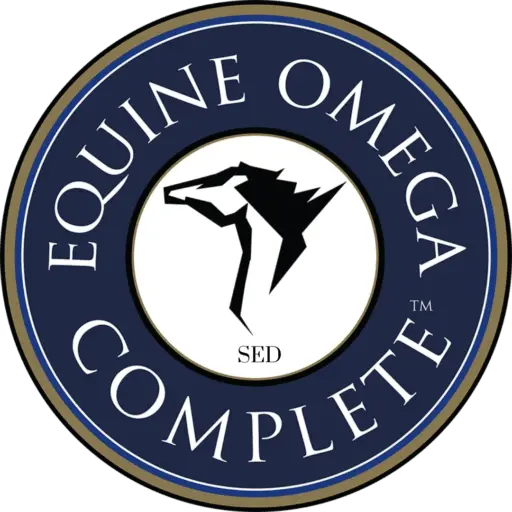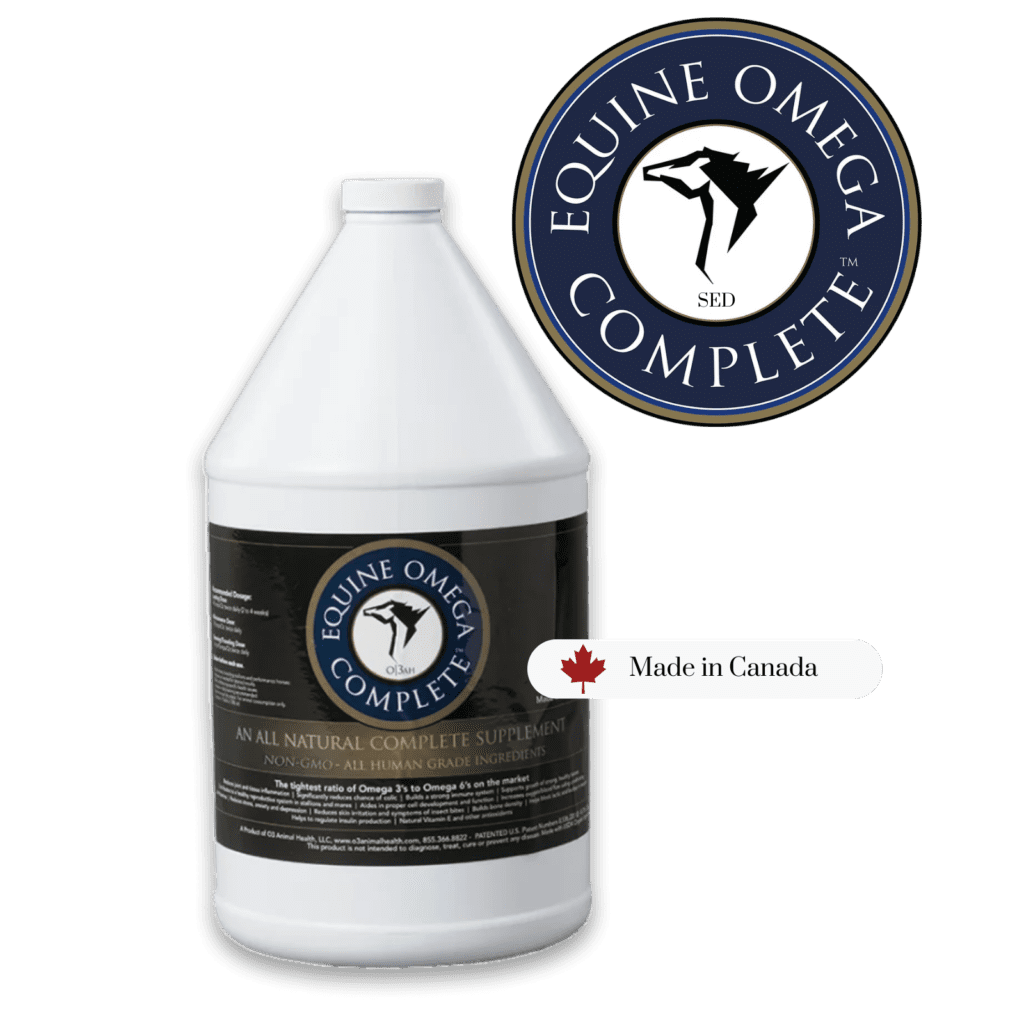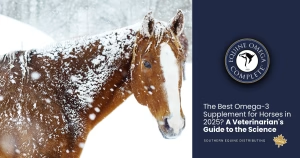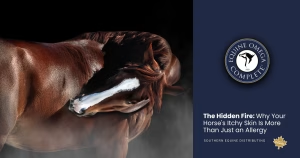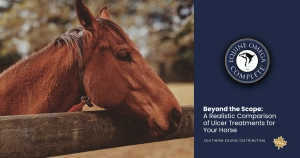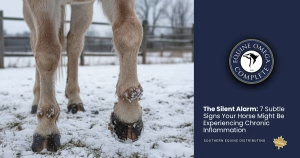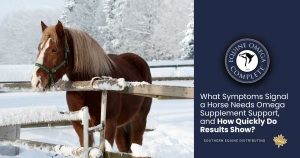Introduction
Horses are sensitive creatures, and their digestive systems are finely tuned. They often communicate their discomfort through various symptoms when something disrupts their digestive balance. Recognizing these signs of digestive distress is crucial in identifying potential ulcer-related issues.
Changes in Appetite and Digestion
One of the earliest indicators of digestive distress in horses is a shift in their eating habits. Keep an eye out for a decrease in appetite, sudden pickiness with their feed, or reluctance to eat altogether. Horses with ulcers may appear uninterested in their meals, taking longer to finish their feed, or even leaving portions untouched. Such changes can stem from the discomfort they experience while digesting food.
Excess Salivation
Excessive salivation, also known as hypersalivation or “slobbers,” can be a telling sign of digestive discomfort. If your horse starts drooling excessively, it could indicate that their digestive tract is reacting to stress or irritation. While this symptom can have various underlying causes, it’s worth considering the possibility of ulcers, especially if other related symptoms are present.
Frequent Colic Episodes
Digestive distress can often lead to colic episodes in horses. While not all colic cases are directly linked to ulcers, frequent colic episodes should be taken seriously. Colic symptoms can vary from mild discomfort to severe pain and can include pawing, rolling, restlessness, or repeatedly lying down and getting up. If your horse experiences recurrent colic episodes, it’s essential to consult your veterinarian for a thorough evaluation.
Changes in Manure
Pay close attention to your horse’s manure consistency and frequency. Loose stools or diarrhea can be indicative of gastrointestinal upset, which can be related to ulcer discomfort. Keep in mind that various factors can contribute to changes in manure, so consider it in conjunction with other symptoms for a more accurate assessment.
Weight Loss and Body Condition
Digestive distress, if left untreated, can lead to weight loss and a decline in overall body condition. If your horse is losing weight despite maintaining a regular feeding routine, it’s a sign that their digestive system isn’t functioning optimally. This weight loss can be especially noticeable in the ribcage area and the topline.
Changes in Behaviour and Performance
Horses are remarkable in their ability to communicate, even without words. When they’re experiencing discomfort or distress, they often convey their feelings through changes in behaviour. Understanding these behavioural shifts is essential for identifying possible ulcer-related issues and taking appropriate action to address them.
Irritability
Horses with ulcers may exhibit irritability and grumpiness, particularly during grooming or saddling. They might pin their ears back, swish their tail, or even bite when these activities that were once routine become uncomfortable due to digestive distress. This behavioural shift can also extend to interactions with other horses and humans.
Restlessness and Agitation
One of the most evident behavioural changes in horses with potential ulcers is restlessness and increased agitation. If your usually calm and composed horse becomes unusually fidgety, constantly shifting weight, pacing the stall, or showing signs of anxiety, it could indicate underlying discomfort in the digestive tract.
Teeth Grinding (Bruxism)
Bruxism, or teeth grinding, is another behavior that may indicate digestive distress. If you notice your horse grinding their teeth frequently, it could be a response to pain or discomfort in the digestive tract. Teeth grinding often occurs during feeding or shortly afterward, suggesting that the act of eating might be causing discomfort.
Reluctance to Perform or Train
Horses in discomfort often show reluctance to perform or train. If your horse is suddenly unenthusiastic about their usual activities, whether it’s riding, jumping, or even going for a trail ride, it’s worth considering that digestive discomfort could be impacting their willingness to work. Reduced performance levels, sudden resistance, or lack of energy might be related to ulcer-related discomfort.
Coat and Skin Changes
Your horse’s coat and skin can often serve as visible indicators of their overall health. Changes in these aspects might be more than just aesthetic; they could signal underlying health issues such as gastric ulcers. Understanding these changes and their potential link to gastric ulcers is crucial for your horse’s well-being.
Dull or Rough Coat Appearance
A once lustrous and glossy coat that has turned dull and lackluster might be cause for concern. Gastric ulcers can affect nutrient absorption, leading to a lack of essential vitamins and minerals that contribute to a vibrant coat. If your horse’s coat has lost its natural shine and feels rough to the touch, it’s worth investigating further.
Dry, Flaky Skin
Dry, flaky skin can be a visible manifestation of digestive distress. Gastric ulcers can disrupt the normal absorption of nutrients, including those that contribute to skin health. As a result, your horse might develop dry patches, flakiness, or even mild irritation on their skin. Keep an eye out for these changes during grooming sessions.
Reduced Shedding
Shedding is a natural process for horses as they transition from one season to another. However, if your horse’s coat isn’t shedding as expected, it could indicate an underlying issue. Gastric ulcers might impact the body’s ability to regulate certain processes, including the shedding of the winter coat. If your horse’s coat is clinging on longer than usual, it’s worth exploring potential health factors.
Gastroscopy and Diagnosis
When it comes to equine health, proper diagnosis forms the foundation for effective treatment.
Gastroscopy is a diagnostic procedure where a thin, flexible endoscope is passed through your horse’s esophagus and into the stomach. Equipped with a tiny camera, the endoscope captures detailed images of the stomach lining. These images are then transmitted to a monitor, allowing veterinarians to closely examine the condition of the stomach’s inner surface.
The Role of Gastroscopy in Diagnosing Ulcers
Ulcers can be challenging to diagnose solely based on clinical signs, as some symptoms can overlap with other conditions. A gastroscopy offers a definitive diagnosis by directly visualizing the stomach lining and identifying the presence, location, and severity of ulcers. This process enables veterinarians to tailor treatment plans specific to your horse’s condition.
Treating and Managing Ulcers
In the realm of equine gastric health, two distinct approaches come into play: Equine Omega Complete® and omeprazole. While both address equine ulcers, a closer look reveals that Equine Omega Complete® offers a unique advantage by focusing not only on healing but also on preventing ulcer recurrence.
Omeprazole: Addressing Acid Production
Omeprazole has been a go-to treatment for equine ulcers, primarily by curbing excessive stomach acid production. While it effectively alleviates current ulcer discomfort, it does not necessarily prevent future ulcer development. Omeprazole essentially manages symptoms rather than addressing the root causes of ulcers.
Equine Omega Complete: Tackling Inflammation
Equine Omega Complete® presents a holistic solution by combining a proprietary blend of omega-3 and omega-6 fatty acids. Beyond just symptom management, these fatty acids contribute to reducing inflammation, supporting immune function, and maintaining skin health. By fostering an environment that discourages inflammation and encourages overall well-being, Equine Omega Complete® goes beyond immediate relief to support long-term gastric health.
Distinguishing Factors
Prevention of Recurrence: One of the most notable distinctions lies in ulcer recurrence prevention. Equine Omega Complete® not only aids ulcer healing but also acts as a proactive measure to reduce the likelihood of future ulcer development.
Comprehensive Care: The omega fatty acid blend in Equine Omega Complete® promotes a healthy immune response, reduces inflammation, and supports overall health—creating a favourable environment for gastric wellness.
Treatment Approach: While omeprazole manages symptoms related to stomach acid, Equine Omega Complete® works to create an internal environment that discourages inflammation, preventing future flareups.
As opposed to omeprazole’s symptom-centric approach, Equine Omega Complete® offers a broader perspective, striving to create an internal environment that supports long-term gastric wellness.
When it comes to your horse’s health, the choice between Equine Omega Complete® and omeprazole extends beyond immediate relief, aiming for enduring well-being.
Equine Omega Complete
This blend of DHA and EPA essential omega fatty acids and all-natural, human-grade vitamin E contains anti-oxidant and anti-inflammatory properties that contribute to overall horse health and targeted support for joint pain, ulcer prevention, healthy hooves, and a shiny coat.
General Prevention Guidelines
While ulcers a significant challenge for horse owners, but the good news is that a proactive approach to prevention and horse care can play a crucial role in maintaining equine gastric health. By implementing certain strategies and providing diligent care, you can create an environment that supports your horse’s digestive system and reduces the risk of ulcer development.
Balanced Diet and Feeding Management
A cornerstone of preventing equine gastric ulcers is maintaining a balanced diet and managing feeding practices. Providing your horse with frequent access to forage, such as hay or pasture, helps buffer stomach acid and prevents it from coming into prolonged contact with the stomach lining. Additionally, avoid abrupt changes in diet, as these can disrupt the delicate balance of the digestive system.
Stress Management
Horses that are subjected to regular stressors, such as intense training, transportation, or changes in routine, are more susceptible to ulcers. Minimize stress by gradually introducing changes, incorporating regular turnout, and providing a stable and comfortable environment.
Regular Exercise and Turnout
Regular exercise and turnout play a vital role in preventing ulcers. Horses that are turned out and allowed to move freely exhibit fewer signs of gastric ulcers – plus, they get more access to that essential nutrient vitamin E. Exercise promotes healthy digestion, reduces stress, and encourages a more natural feeding pattern.
Adequate Hydration
Proper hydration is essential for maintaining gastric health. Ensure that your horse has access to clean, fresh water at all times.
Adequate Hydration
Preventing equine gastric ulcers requires a multi-faceted approach that addresses diet, stress, exercise, and overall horse care. By implementing strategies that support digestive health, reduce stress, and promote well-being, you can significantly reduce the risk of ulcer formation. Equine Omega Complete® serves as a powerful ally in this effort, contributing to a balanced nutritional approach that supports a healthy immune response and discourages inflammation. With dedication and a comprehensive approach, you can provide your horse with the best possible chance for optimal gastric health and overall well-being.
